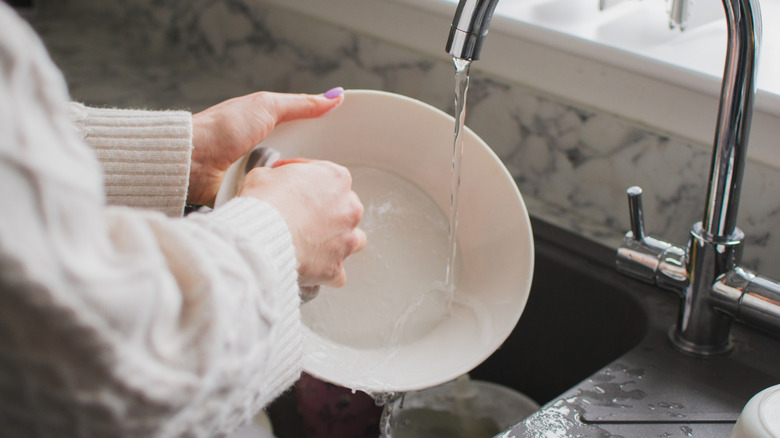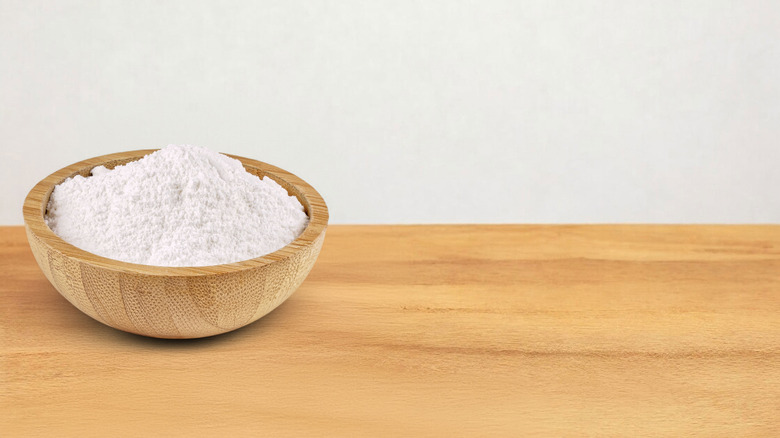Use These 2 Pantry Staples To Revive Scratched Dinnerware
Over time, crockery develops what look to be scratches, resulting in lackluster dinnerware. Before you go out and buy replacements, take heart that you can correct this with only baking soda or cream of tartar. Often, what we think are scratches are actually just scuff marks from cutlery and other metal utensils. These are surface-level blemishes that can be wiped away; they just need a slightly more abrasive cleaning agent than what your dish soap can offer.
Either cream of tartar or baking soda works individually, so there is no need to combine the two. Dampen the scuffed dish and sprinkle over enough of either powder until a paste forms. From there, take a cloth or paper towel and scrub away. This will take a little bit of elbow grease, but it shouldn't be a huge workout, and you should see results immediately. If some scuff marks are more stubborn, you can repeat this process until your standards are met.
Of the two pantry items, baking soda is the more abrasive, so it will be a better option for tougher or darker marks. That said, it has the potential to actually scratch your dishes, which may be relevant if you're dealing with delicate or older items. Not to mention, vintage dinnerware carries the risk of heavy metal exposure, so extra caution should be taken in washing it. In such a case, cream of tartar will offer a gentler clean, though it may take a couple of touch-ups to ensure even results.
How to assess the state of your dinnerware
Certain materials are more prone to scratches and scuffs than others. Earthenware and stoneware can be scratched easily due to their minimal finishing treatment. Other types, like porcelain, are actually impressively scratch-resistant – although they tend to take on scuffs more readily, leading people to mistakenly think that they scratch easily. What's more, a lot of scratching actually comes from cleaning the dinnerware with chemicals that are too abrasive and materials that are too coarse. In this regard, ingredients like cream of tartar, baking soda, vinegar, and lemon juice have cemented themselves as the heavy-hitters of natural cleaning agents thanks to their gentle abrasiveness and lack of synthetic additives.
While you don't typically need to use cream of tartar and baking soda together (as they do the same thing), they can each be combined with other basic items to transform your kitchen. Baking soda and vinegar are the key to sparkling baking pans, while boiling cream of tartar in water can create the answer to your pots and pans that are riddled with burn marks. As with cleaning scuff marks, the secret is in their mild abrasive qualities that lift substances even when they stubbornly cling to the base material.


